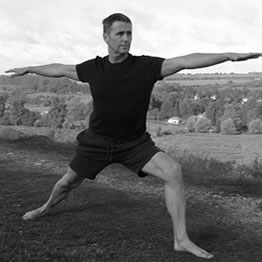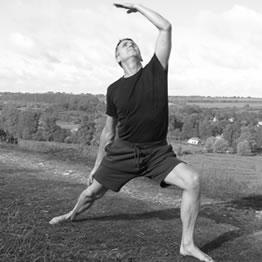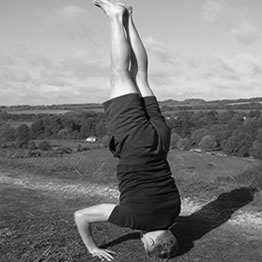Why Yoga?
How is Yoga Relevant Today?
Yoga offers a way of living, not only for us but also with each other. As the human race continues to evolve and develop, it is becoming increasingly clear of the necessity to live in harmony with each other and our natural world. The practise of yoga is unique to each individual. Self-awareness is gained, bringing an increased sense of calmness, clarity, centeredness and balance to our everyday lives. It is a holistic practise of harmony, balance and unification.
Medical Science explains that Yoga therapy is beneficial due to the balance it creates on the nervous and endocrine (hormones) systems, which directly affect every other system within the body.
For most people who practise yoga the benefits include, increased strength and flexibility, increased energy levels, inner peace, improvement in ability to focus and concentration levels, balance and coordination and general self-awareness. Practitioners have stated that their quality of sleep is better, management of stress and distress improves, weight loss occurs in a health-oriented manner as the metabolic rate regulates.
The practise of Yoga is complimented through keeping a Yoga journal. It will assist in clarifying certain issues and helps to bring awareness to your own patterns of development and growth. When we first bring awareness into the body, you may initially become aware of how out of shape you are, how nervous you are, how inflexible and unrelaxed you are. Journaling assists not only in identifying these qualities but also captures their journey as they develop through practise and experience.
What is Yoga
Originating from its Sanskrit root “Yuj”, meaning to unite or to join, yoga aims to bring union of oneself and all that is. It works on all aspects of a person including physical, mental, emotional, psychological, vital and spiritual.
This union is brought about through the practice of Asana (postures), Pranayama (breathing techniques), Mudra (positions or attitudes which represent the emotions) and Bandhas (locks for channeling energy).
On a spiritual level, this oneness or unity describes the merging of the individual consciousness with that of the universe, while on a physical level it applies more to the coordination of all of the systems within the body to achieve balance and harmony. Practicing Yoga helps to realign the body, freeing the muscular system and rebalancing the skeletal system. Through internal massage the organs are nourished and toxins are eliminated. Unity and balance is achieved throughout the whole body.
In Yoga it is understood that the mind, the body and the spirit, each effect the other, and it is an aim to try and achieve harmony within the whole system. For example, your emotions and thoughts (state of mind) will affect your immune and endocrine (hormone) system, which may affect your circulatory or respiratory system to such an extent that you could become ill. Yoga aims to bring all different bodily functions into harmony and coordination, so the whole body benefits.
Quantum Physics proves that the universe is comprised of patterns of energy or molecules and atoms. In Yoga this energy or life force is called “prana”, and is said to be the sum of all of the energy that is evident in the universe. The philosophy of yoga is based on the ideas of how to access and use this energy that sustains all living things.
Although our bodies are inundated with prana (we absorb it through the sun the air and the food that we eat), our vitality depends on how we are able to utilise this energy. Yoga postures, breathing techniques and meditation help you to balance your own energy centers (chakras), control, direct and store prana.
The Origins of Yoga?
More than 10,000 years ago an ancient civilization which existed in India and throughout all parts of the world, started to develop the practice of Yoga. Ancient Sages (spiritual leaders) started to develop physical positions and breathing techniques to stretch, cleanse and center the body to achieve states of vitality, clarity and focus in order to meet our spiritual potential through meditation.
A lot of these postures were developed through observing nature and how animals lived in harmony with their environment and within their own bodies. You will notice that a lot of Yoga postures are named after and reflect the actions of animals. The yogic science slowly evolved.
In ancient times knowledge was mainly passed through word of mouth from the teacher or guru to the disciple so there was always a clear understanding of meanings and aims. The Yoga system was first written down by Sage Patanjali in “The Yoga Sutras” (threads of wisdom) at around the time of the birth of Christ. They were not new teachings but the essence of a system that had been evolving since prehistoric times.
The sutras are short teachings, which offer wisdom and insight into yoga philosophy.
They are set out in an eightfold path and are made up of mental and physical disciplines or limbs.
These limbs are not steps that once experienced can be forgotten, different aspects of the path may unfold and bring relevance at different stages throughout our lives. The limbs will develop together and lead to self-awareness and self-knowledge.
Styles of Yoga
As Yoga has developed over thousands of years, many different styles have been created each with its own emphasis. Some of these include:
- Jnana Yoga: Union by knowledge
- Bhakti Yoga: Union by devotion
- Karma Yoga: Union by selfless action or service
- Mantra Yoga: Union by speech and sound
- Hatha Yoga: Union through bodily control (Iyenger and Astanga Yoga is forms of this)
- Raja Yoga: Union through mental control
- Laya or Kundalini Yoga: Union through creative energy
- Tantric Yoga: Union through sexual energy
The Eight Limbs of Yoga
Even though there has been such a variety in the development of the styles the teachings and the essence of the practice remains the same, based around these eight limbs.
1. YAMA
5 universal truths that act as a guide to living in harmony.
Ahimsa: Non-violence
Satya: Truthfulness (to yourself and to others)
Asteya: Non-stealing
Bramacharya: Chastity (not celibacy, rather harnessing sexual energy for other purposes)
Aparigraha: Non-hoarding or not over consuming
2. NIYAMA
5 physical and mental disciplines. As you practice yoga these will develop naturally. Saucha: Purity Santosa: Contentment Tapas: Devotion and Dedication (inspiration and personal growth) Svadhyaya: Study, Observation and General Self Awareness Isvara Pranidhana: Devotion to universal one or God
3. ASANA
Physical postures that stretch and strengthen the body, eliminating unwanted toxins. Prepares the body and mind for sitting quietly in meditation.
4. PRANAYAMA
Breathing techniques which focus on increasing the bodies Intake of “prana” or life force. Our energy levels are increased.
5. PRATYAHARA
Withdrawal of the senses. Stopping the external stimulation of the senses and focusing on experiencing happiness and contentment from within.
6. DHARANA
Concentration or calming of the mind.
7. DHYANA
Meditation.
8. SAMADHI
Enlightenment, living completely “in the present” in union with all that is around you.
Jump to:
Join us
We run weekly evening and lunchtime Yoga classes at Winchester College
See our yoga class timetable or Contact us for more information




